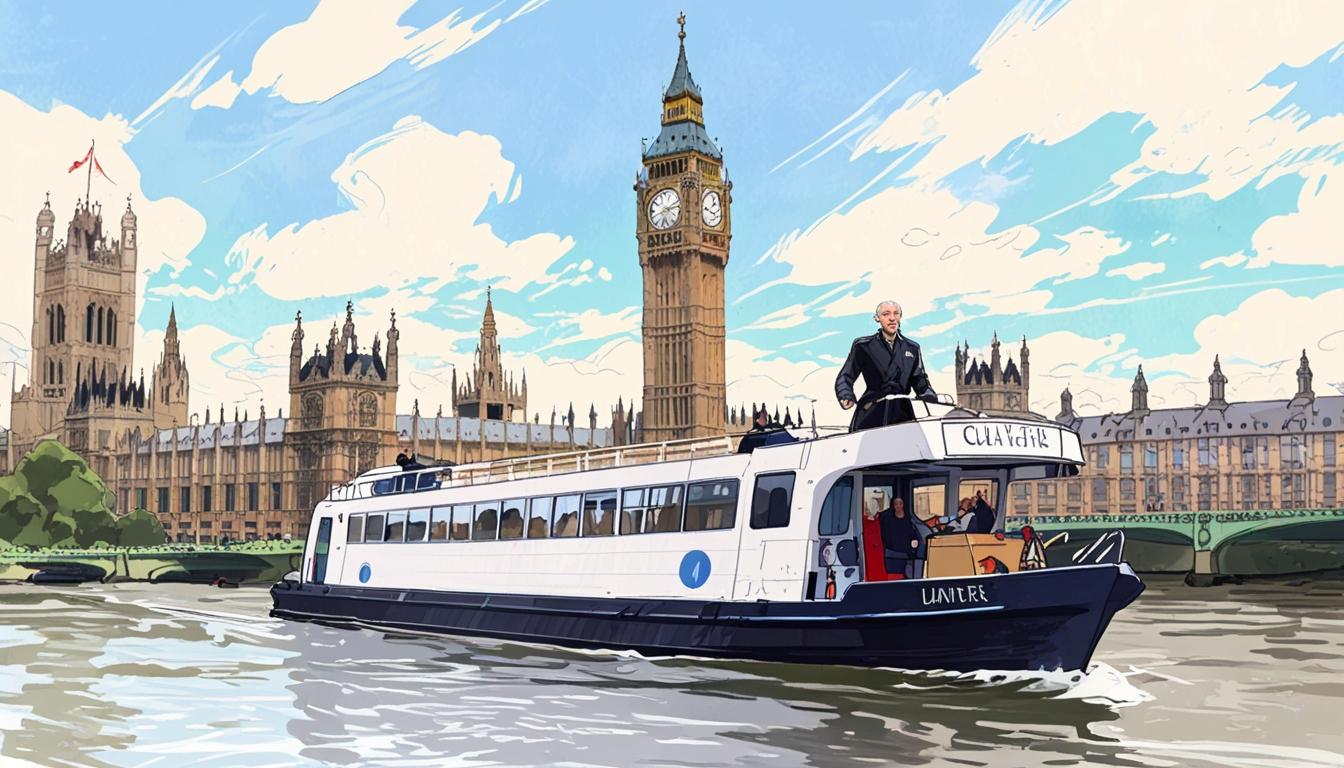King Charles Embraces Sustainable Travel on Thames Commute
In a move that reflects his commitment to environmental sustainability, King Charles III made headlines this week by opting for a hybrid Thames Clippers 'Uber boat' for his commute, marking a royal first for the monarch. At 76, Charles appeared to relish the change from his usual State Bentley while navigating London's iconic waterways beneath a sunlit yet breezy sky, with landmarks like the Houses of Parliament gracing the backdrop.
Upon his arrival at the floating pier in Westminster, the King interacted with executives and the Lord Lieutenant of London, Sir Kenneth Olisa. With his characteristic wit, he humorously queried, "Am I going to get into the right boat? There are so many to choose from," as he artfully bypassed a vessel brimming with tourists and commuters.
The hybrid ‘Mars Clipper’ showcased the growing trend towards eco-friendly transport along the Thames. This vessel is one of three battery-powered crafts in a fleet designed to reduce carbon emissions significantly. Thames Clippers, a pioneer in this area, has been heavily investing in hybrid and hydrogen-powered alternatives to traditional marine energy sources. As Charles embarked on his ten-minute journey to the Thames Tideway Tunnel project, he expressed enthusiasm about the advancement in vessel technology, remarking, “It’s a nice way [to travel].”
The King’s visit also included a tour of the Thames Tideway Tunnel, often referred to as London’s ‘super sewer,’ which recently commenced operations after a decade of construction. This 25km-long engineering feat aims to mitigate the pollution of the River Thames, effectively storing the equivalent of 640 Olympic swimming pools of storm sewage. Historically, the Victorian sewer system was designed for a population of just four million; however, rapid urban growth and climate change-related rainfall have rendered it inadequate.
Accompanied by Secretary of State for Environment Steve Reed, the King observed real-time data illustrating the amount of sewage being captured by the tunnel. The innovative system has already successfully diverted over six million tonnes of storm sewage since its launch, with Tideway’s advanced technology calculating sewage influx during rain events in real time.
During his visit, Charles also engaged with members of the 25,000-strong construction workforce involved in this ambitious project, reminiscing kindly with workers about their families and the challenges they face. The site features a 'mini park' with 71 trees and 3,000 plants, demonstrating a commitment to enhancing the environment around this monumental infrastructure.
Andy Mitchell, CEO of Tideway, lauded the project as a significant accomplishment, stating, “It’s taken over ten years of work from an awful lot of people to get where we are now.” He emphasised the job creation aspect and the commitment to cleaner rivers, adding that in an average year, the system will prevent 40 million tonnes of sewage from entering the Thames.
This dedication to ecological issues resonates with the King’s long-standing advocacy for environmental conservation. Charles has been vocal about the threats posed by climate change since he was 21, and his engagement at events like COP28 demonstrates a deep concern for future generations.
Additionally, the new system is now fully integrated with the Lee Tunnel, operational since 2016, completing the London Tideway Tunnel network aimed at safeguarding the Thames from sewage pollution. Tideway reports significant reductions in environmental impact, having diverted 6,790,231 cubic meters of sewage from the river since August.
Later, Charles greeted noted poet Dorothea Smartt, whose work adorning the tunnel's ventilation columns reflects a fusion of art and engineering. The King’s affinity for nature and passion for sustainability were further highlighted during his attendance at the premiere of Sir David Attenborough's documentary, reinforcing his commitment to environmental advocacy alongside figures known for their activism in this field.
Charles's journey aboard the eco-friendly Uber boat and his engagement with critical infrastructure projects indicates a royal endorsement of sustainable practices, setting an example in the continued quest for greener solutions to urban transport and environmental preservation.
Reference Map:
- Paragraph 1 – [1], [2]
- Paragraph 2 – [1], [4]
- Paragraph 3 – [3], [5]
- Paragraph 4 – [1], [6]
- Paragraph 5 – [1], [4]
- Paragraph 6 – [2], [3]
- Paragraph 7 – [1], [7]
Source: Noah Wire Services
